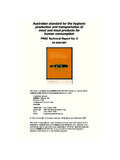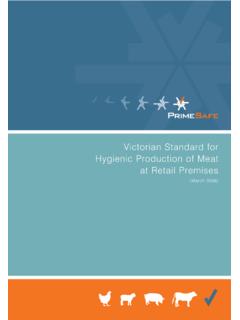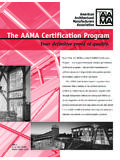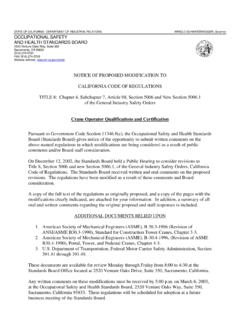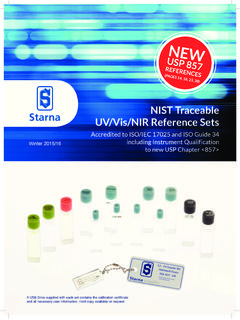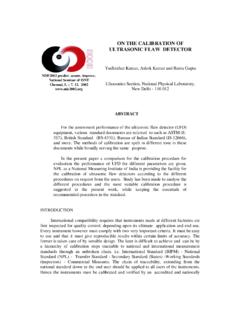Transcription of Standard 4.2.3 - Guidelines for the Management of …
1 Australian Meat Regulators Group Standard - Guidelines for the Management of Listeria National Guideline Document developed by Meat Regulatory Agencies. Biosecurity South Australia New South Wales Food Authority Northern Territory Department of Primary Industries and Fisheries PrimeSafe Victoria Safe Food Production Queensland Tasmanian Department of Primary Industries, Parks, Water and Environment Western Australia Health Food standards Australia New Zealand Australian Department of Agriculture and Water Resources (To be read in conjunction with Australian Standard 4696:2007 and the Australia New Zealand Food standards Code). 2. GLOSSARY. A producer of ready-to-eat meat, as identified in Standard Applicable meat business of the Australia New Zealand Food standards Code (the Code), that m a n u f a c t u r e s p a c k a g e d R T E m e a t s f o r s a l e o r purchases RTE meat products for slicing or portioning and packaging for further sale.
2 Authority The State, Territory or Commonwealth agency or agencies having the legal authority to implement and enforce Standard of the Code. Up to 24 hours of continuous production of product or Batch products from any specific line or a lesser period of continuous production between cleaning and sanitising procedures having been completed. Any environmental altering container or wrapper in which food Package is wholly enclosed prior to being displayed or stored for sale that extends the unpackaged shelf life of the food. Ready-to-eat meat Ready-to-eat meat: meat products intended to be consumed without further heating or cooking, and includes . (a) cooked or uncooked fermented meat; and (b) p t ; and (c) dried meat; and (d) slow cured meat; and (e) luncheon meat; and (f) cooked muscle meat including ham and roast beef; and (g) other ready-to-eat meat that is susceptible to the growth of pathogens or the production of toxins.
3 Validation Obtaining evidence to confirm that the food safety Management system is complete and effective and will deliver the expect food safety outcomes Verification The use of methods, procedures and tests in addition to monitoring to determine the effectiveness of a food safety Management system Purpose Under the Code's Standard Primary Production and Processing Standard for Meat a producer of ready-to-eat meat must implement a food safety Management system that identifies, evaluates and controls hazards. These Guidelines provide guidance for businesses and authorities to promote the consistent monitoring and Management of listeria by businesses that manufacture packaged ready- to-eat meats as a means of verifying the effectiveness of process controls. Scope This document applies to applicable meat businesses, as defined above, and their activities relating to the manufacturing of RTE meats , including RTE meats in which the growth of Listeria will not occur (as defined in Standard of the Code).
4 Where there is doubt over whether a product is RTE ( frozen or flash-fried product), products will not be considered RTE if the product label clearly indicates the need to cook the product for safety and the cooking instructions have been validated by the applicable meat business. Businesses that apply a post-cooking lethality treatment to product ( in-pack pasteurisation) do not fall within the scope of this document, but are still required to validate their process. AMRG Guidelines for the Management of Listeria June 2016. 3. Responsibilities Businesses whose operations fall within the scope of this document shall develop quality assurance procedures approved by the authority. These must address the following parameters. Minimum operational requirements Applicable meat businesses must review how their operations comply with Section 2 of the Meat &.
5 Livestock Australia (MLA) document, Listeria monocytogenes in smallgoods: risks and controls, and implement these requirements within their quality system. Authorities shall use this document as a basic reference tool to assess compliance with Standard of the Code in order to verify the meat business' process control. Minimum environmental sampling plan Each applicable meat business shall implement an effective Listeria sampling plan that covers environmental testing and shall be able to justify its sampling methodology for detecting Listeria spp. in the processing environment. The objective of the sampling plan is to assess whether the RTE environment is adequately under control with respect to potential contamination of RTE product with L. monocytogenes. The business's food safety program must include the frequency of testing, identify the size and location of the sample sites, and detail corrective action procedures, including cleaning programs and handling of product following a positive test for Listeria indicator organisms on a food contact surface.
6 Applicable meat businesses shall sample sites within the operating environment that are most likely to reveal contamination by Listeria s pp. if it is present. The choice of sites must be justified and documented in the food safety program. Table 1 lists sites where Listeria spp. is likely to establish and multiply. Zone 1 sites are those that are typically contaminated with Listeria while Zone 2 sites are those that can harbour Listeria spp. in a RTE processing environment. Samples shall be taken from Zone 1 and Zone 2 surfaces. Table 1 Classification of environmental sampling sites as part of a Listeria sampling plan Priority Examples of sampling sites within the priority zones Zone 1 Equipment that comes into contact with cooked product ( slicers, dicers, hoppers), spiral freezers and conveyors for cooked product, tables and benches on which product is stored or portioned.
7 Zone 2 Floors, walls, ceilings, drain outlets, pools of water ( on the floors of a manufacturing area or cold room), condensate from refrigeration evaporators (cold rooms), chiller doors, switches, floor joints/crevices At a minimum, applicable meat businesses shall sample five environmental sites for Listeria spp. monthly. Testing shall include samples collected before operations commence and during operations, and shall cover all important work surfaces over time. Businesses shall maintain a consistently high level of hygiene and shall undertake sampling throughout the year regardless of whether the applicable business is producing packaged RTE product in a particular month. AMRG Guidelines for the Management of Listeria June 2016. 4. If an applicable meat business undertakes in-house laboratory testing, for comparison purposes at least one lot of monthly environmental samples must be submitted annually to a NATA-accredited laboratory for testing.
8 Product testing complemented by environmental testing to monitor and detect Listeria in the environment is more effective than product testing alone. Two factors determine the effectiveness of a Listeria control program the design of the environmental testing plan ( the capacity to find Listeria if present) and the response to a positive finding ( what corrective action is implemented). Authorities acknowledge a Listeria-free environment is difficult to maintain at every test. The microbiological sampling plan shall be designed to detect Listeria if it is present, and it would be unusual if Listeria wasn't found in the environment occasionally. However, any detection of Listeria must be treated as an opportunity to improve the program, a strategy that will ultimately protect both consumers and the business.
9 Action in the event of a positive environmental sample - Zones 1 and 2. If a positive environmental sample is found, the applicable meat business shall immediately investigate the potential cause of the problem and initiate corrective action in accordance with its food safety program. The suspect areas shall be immediately identified, cleaned and sanitised. Any implicated equipment and parts shall be dismantled and cleaned effectively, for example, by soaking in a concentrated sanitiser ( Quat) at 800 or 1000 ppm. The business shall ensure RTE product is not contaminated and continue to review corrective action. This process allows the business to demonstrate adequate steps have been taken to minimise the risk of Listeria contamination of RTE. product. Whenever there is a positive environmental sample for Listeria from either a Zone 1 or Zone 2 surface, the business shall increase the frequency of environmental testing t o w e e k l y and continue to test until the environmental swabbing program has achieved three consecutive negative results from tests taken on separate operation days.
10 The purpose of increasing the testing frequency is to monitor the effectiveness of the corrective action that has been undertaken by the meat business. Where negative results are not being obtained, the adequacy of the corrective action needs to be further reviewed and revised corrective action shall be implemented. Additional action in the event of a positive environmental sample - Zone 1. To ensure end product has not been contaminated, where a food contact surface tests positive for Listeria that swab shall be typed in a laboratory to confirm the presence or otherwise of L. monocytogenes. All potentially contaminated RTE product shall be held pending the results of this test. If the presence of L. monocytogenes is confirmed, the applicable meat business shall follow Standard of the Code and test and hold available product batches from the day of the first positive L.
